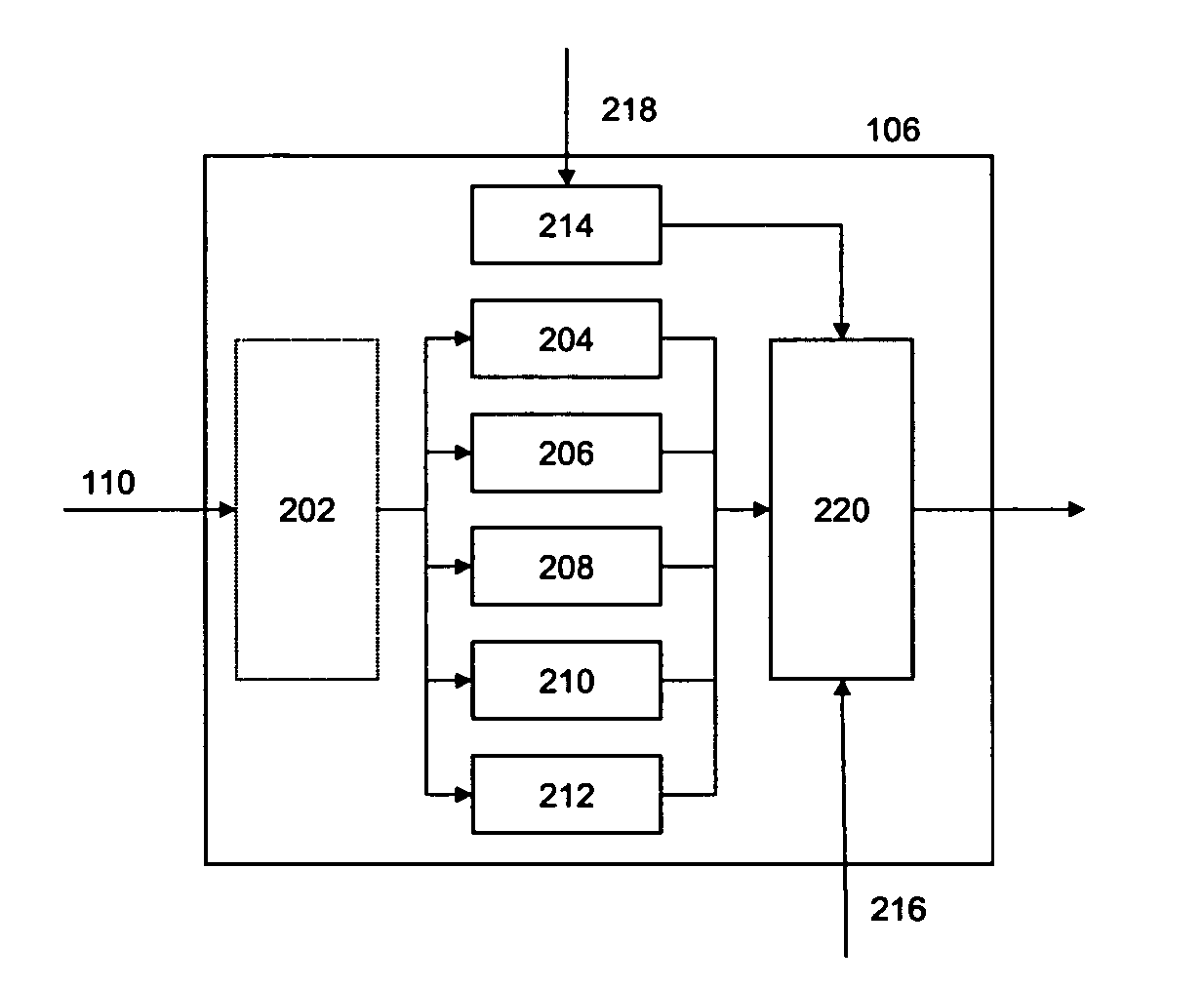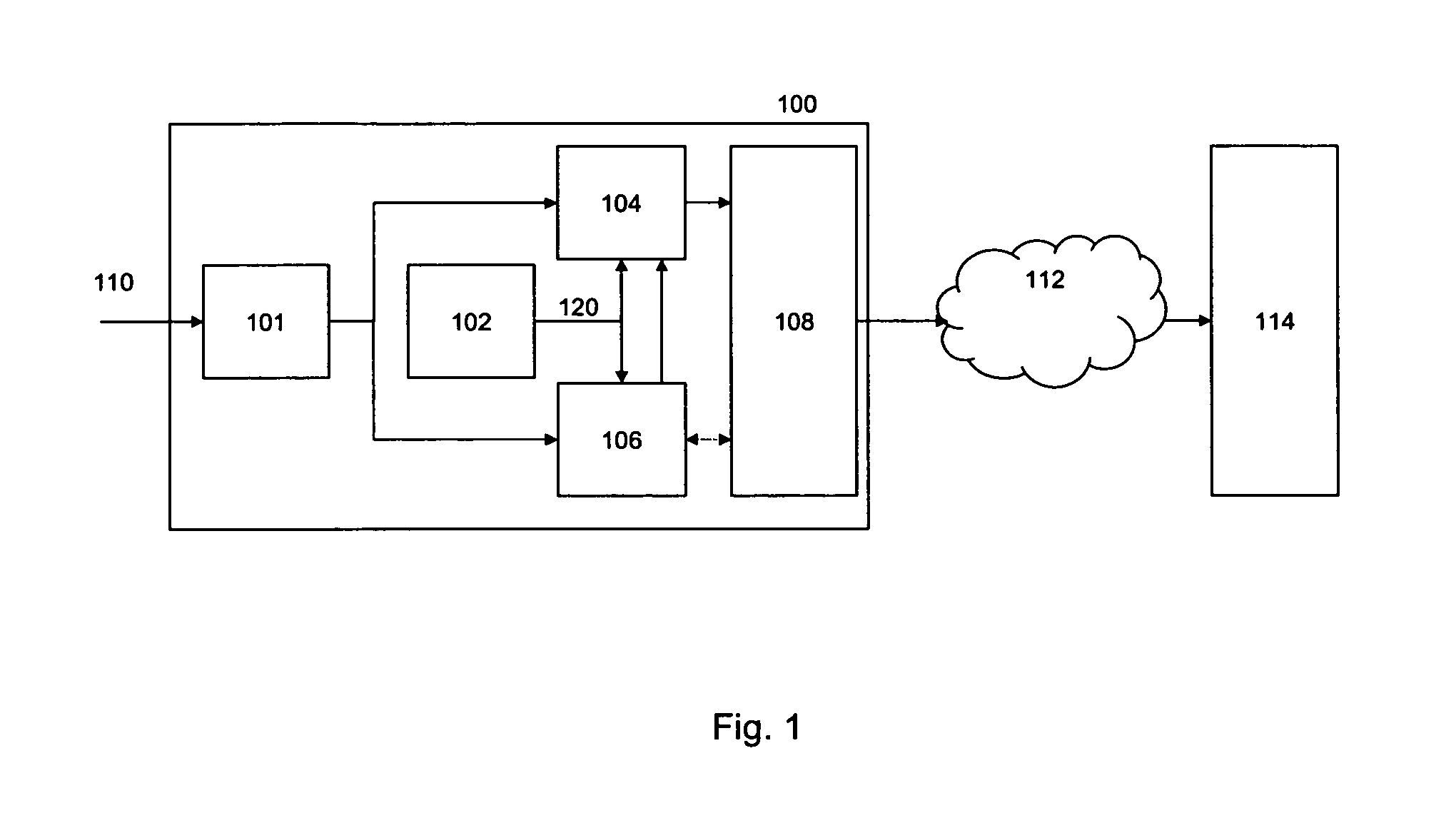Adaptive voice activity detection
a technology of activity detection and voice, applied in the field of audio encoding using activity detection, can solve the problems of reduced vaf, partially masking of lower quality codecs, etc., and achieve the effects of reducing vaf, improving spectral efficiency, and reducing va
- Summary
- Abstract
- Description
- Claims
- Application Information
AI Technical Summary
Benefits of technology
Problems solved by technology
Method used
Image
Examples
Embodiment Construction
[0042]FIG. 1 is a schematic block diagram of an exemplary AMR-based audio signal transmission system comprising a transmitter 100 with a division unit 101, an encoding mode selector 102, a multimode speech encoder 104, an adaptive characterization unit 106 and a radio transmitter 108. Also comprised is a network 112 for transmitting encoded audio signals and a receiver 114 for receiving and decoding the encoded audio signals.
[0043] At least the multimode speech encoder 104, and the adaptive characterization unit 106 may be provided within a chip or chipset, i.e. one or more integrated circuits. Further elements of the transmitter 100 may also be assembled on the chipset. The transmitter may be implemented within a mobile device, i.e. a mobile phone or another mobile consumer device for transmitting speech and sound.
[0044] The multimode speech encoder 104 is arranged to employ speech codecs such as AMR and AMR-WB to an input audio signal 110.
[0045] The division unit 101 temporally...
PUM
 Login to View More
Login to View More Abstract
Description
Claims
Application Information
 Login to View More
Login to View More - R&D
- Intellectual Property
- Life Sciences
- Materials
- Tech Scout
- Unparalleled Data Quality
- Higher Quality Content
- 60% Fewer Hallucinations
Browse by: Latest US Patents, China's latest patents, Technical Efficacy Thesaurus, Application Domain, Technology Topic, Popular Technical Reports.
© 2025 PatSnap. All rights reserved.Legal|Privacy policy|Modern Slavery Act Transparency Statement|Sitemap|About US| Contact US: help@patsnap.com



